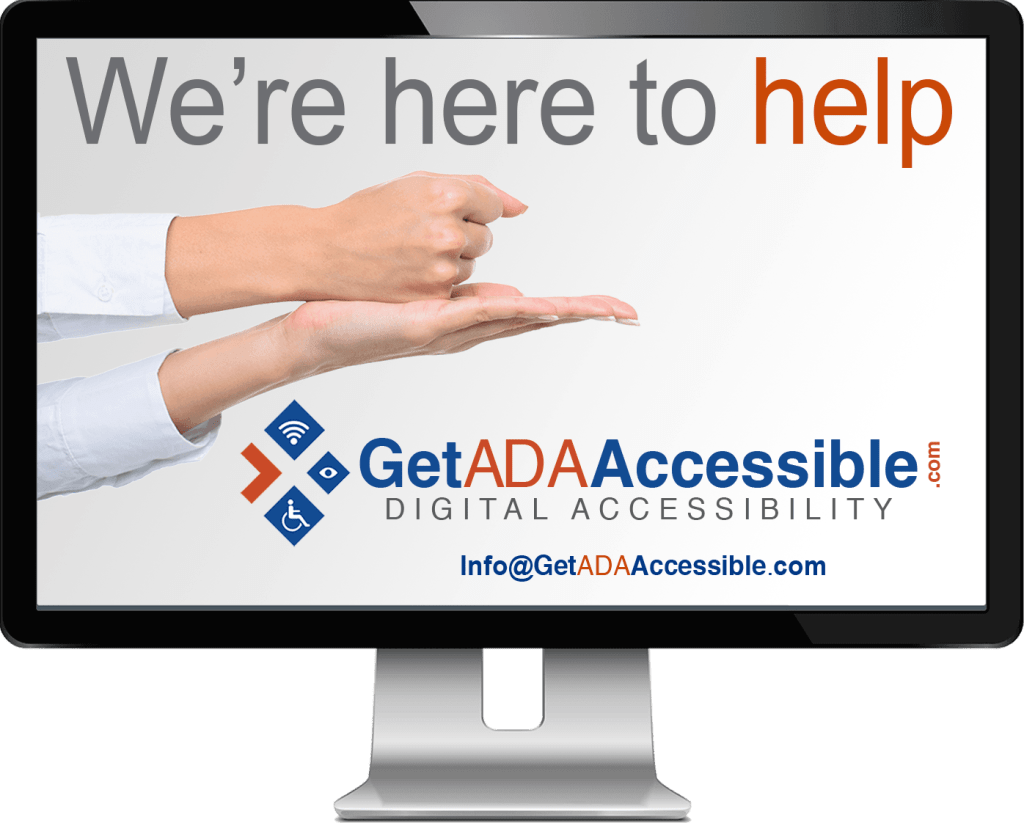Frequently Asked Questions About Website Accessibility
How is accessibility measured?
The ADA defines a website as operating “a place of public accommodation.” There are 12 different types of public accommodations this statue lists but the one that encompasses most websites is “other sales or rental establishment.” When the statute was passed in 1988, the Internet was not what it is today.
If you have a brick-and-mortar store, your website is an extension of that store and so are the requirements. For those who do not, you’re still under the ADA because of the way the guidelines were originally written to include reasonable accommodation. The lawsuit against Blue Apron.com and NetFlix illustrates this ruling.
What are the standards for accessibility?
ADA and the Rehabilitation Act – Section 508 and 504 use the standards set by WCAG (Web Content Accessibility Guidelines).
Within the WCAG standards, there are four sections (P.O.U.R.):
- Perceivable
- Operable
- Understandable and
- Robust
There are four different levels of compliance, A, AA, and AAA.
How does accessibility affect website users?
Who are required to comply for accessibility?
What happens if you do not comply with the law?
Some website owners receive “demand letters” many to the tune of $50K or more. Some businesses just receive notice of litigation and then scramble to find a solution for their accessibility. When either of those happen, the costs incurred are always more than being proactive. Businesses must then make their websites accessible, usually pay a settlement and their attorney fees.
Why isn’t accessibility built-in to a website?
Could be digital agencies and businesses with in-house development teams are not aware of the requirements for their website, or do not want to add the overhead of having an accessibility expert on staff and would rather partner with an expert who can work with their development team, like Get ADA Accessible, providing auditing and reporting on the accessibility errors on the website and providing the needed code to remediate them.
Can't I just add one of the overlays and be ok?
There are many “pseudo” accessibility overlays on the market making promises of website accessibility.
We have manually tested websites with these overlays and they all fail. Not only that, they also force a user to abandon their assistive technology they use daily and resort to the overlays.
As you can image, this is not a solution but a hinderance for those with disabilities. Don’t be fooled into thinking an overlay will make your website accessible.
In an article on Forbes entitled: “Website Accessibility Lawsuits Rising Exponentially In 2023 According To Latest Data” it states: “According to UsableNET’s report, which involved the company’s research team documenting all lawsuits involving websites or mobile apps in federal court under the ADA or in state courts in New York and California, there have been 414 lawsuits to date in 2023 filed against companies with active widgets in contrast to 313 during the same period last year.”

I have more questions
We’re always happy to answer any questions. Schedule a time to talk or contact us below using the forms below.

Contact GET ADA Accessible
"*" indicates required fields
Schedule A Time To talk
Our accessibility team is here to help you every step of the way.

